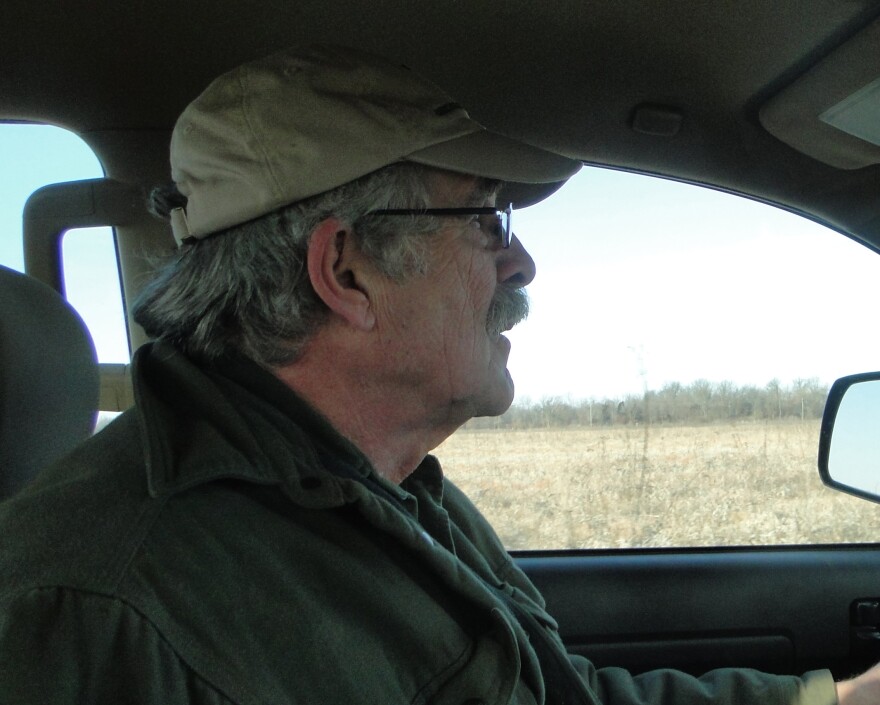Landscape diversity in Missouri has changed since its settlement in the 18th century. Where there was once prairies, forests and savannahs, in many cases there are now towns, cities and farms.
The Missouri Department of Conservation is working to remedy this problem by restoring prairies to “pre-settlement standards.” These standards include no non-native plant species and plants from within a 50 mile radius of the prairie.
One of these projects is the Prairie Fork Conservation Area, which was donated to the Missouri Department of Conservation by Pat Jones in 1997. Jones is the widow of Edward Jones, Jr, and they worked to improve the more than 700 acres that make up Prairie Fork for many years.

Jamie Coe has worked with Jones since the early 1990s and has continued to work with the Department of Conservation for the past 11 years. Every year, the goal is to begin restoration on 30-40 acres of land, as the amount of natural prairie in Missouri is very low.
“Now there is very little. Less than 5% of Missouri’s land is in native prairie,” Coe said.
This year was a little different. Instead of seeding a new area of land, a previous plot was overseeded with forbs or as they are more commonly known - wildflowers.
"Less than 5% of Missouri's land is in native prairie."
The seeding took place on Jan. 2 and Jan. 3, and all before 9 a.m. Nicole Walker, a wildlife biologist who has been working on the project for more than a year, said that the seeding had to take place in below freezing temperatures to ensure cold stratification. This allows the seeds to properly germinate in the spring.
“Because it is so cold the seeds will then actually break open and they will be able to take hold in the spring,” Walker said. "The other side to it to is that since we have snow and ice on the ground right now, it will give extra moisture.”
Wesley Hanks is a wildlife research assistant involved in the project and actually spread much of the seed this year. He said the process is much more time consuming than simply buying seed and dumping it on the ground.
Most seeds are hand collected over the summer by a two-person team, and then have to be dried, bagged and eventually mixed with potash. Hanks said the potash helps the seed spread more evenly over the plot.

Bryan Knowles is one of the members of the seed collection team. He is a retired school teacher with a degree in Biology, and has been working with the Department of Conservation as a seed collector for 10 years.
His job this winter was to walk the property with a bucket full of special seeds.
“This is spot seeding,” Knowles said. “The general mix…is everything mixed at an equal rate and you kind of let Mother Nature sort things out as time goes on."
All of plants used at Prairie Fork are considered to be “local ecotype,” and are gathered from Prairie Fork and other restoration efforts in the area.
Hanks said that the “local ecotype” is not specific to just Prairie Fork, but instead includes seeds from within a 50 mile radius.
“There is some stuff that is native to Missouri, but may not be native to this range,” Hanks said. “They may only come so far north in the state. So, we try to keep it to what was historically here.”

Walker said Prairie Fork is more than just a simple prairie restoration. It is an important educational tool for school age kids.
“There is that really cool education side where we can bring kids back outside and let them enjoy nature,” Walker said.
She added that the restoration is not only good for the biodiversity of the land, but also provides homes for wildlife that have lost their natural habitats to row crop farming.
There are currently 16 Missouri restoration projects under the supervision of the Missouri Prairie Foundation. A few include the Coyne Prairie, Bruns Tract and the Golden Prairie.





